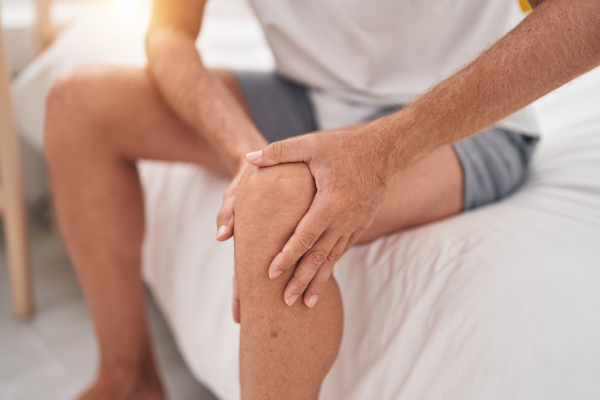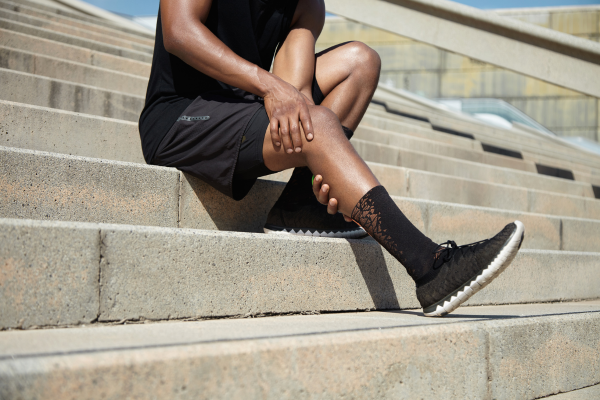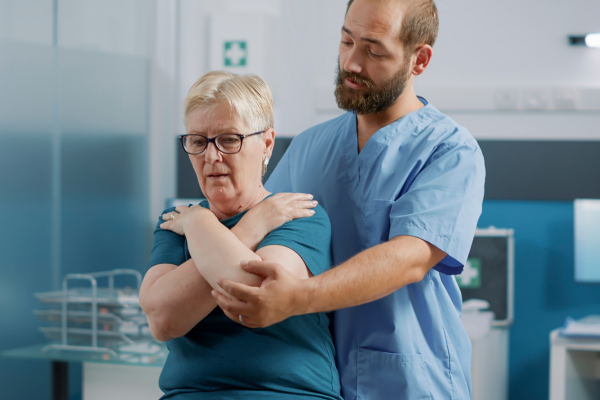Scoliosis is a common spine condition that affects 5% of the UK population. It often presents itself subtly and doesn’t cause any symptoms, but can sometimes carry significant implications for those it affects, leading to back pain and abnormal posture. Scoliosis can improve with treatment, so in this article, we will dive into what scoliosis is, the signs and different types. We’ll also explore how it’s diagnosed and treated!
What is scoliosis?
Scoliosis is a condition that causes the spine to twist and curve. Everyone has some curvature to the spine (even if it appears straight!), however, a spine affected by scoliosis has an S, Z or C-shaped curve, which can give the appearance that the person is leaning to one side.
This curve can happen in different places in the spine, for example in adolescents, it can occur in the rib cage area, and in adults, it can occur in the lumbar or lower spine.
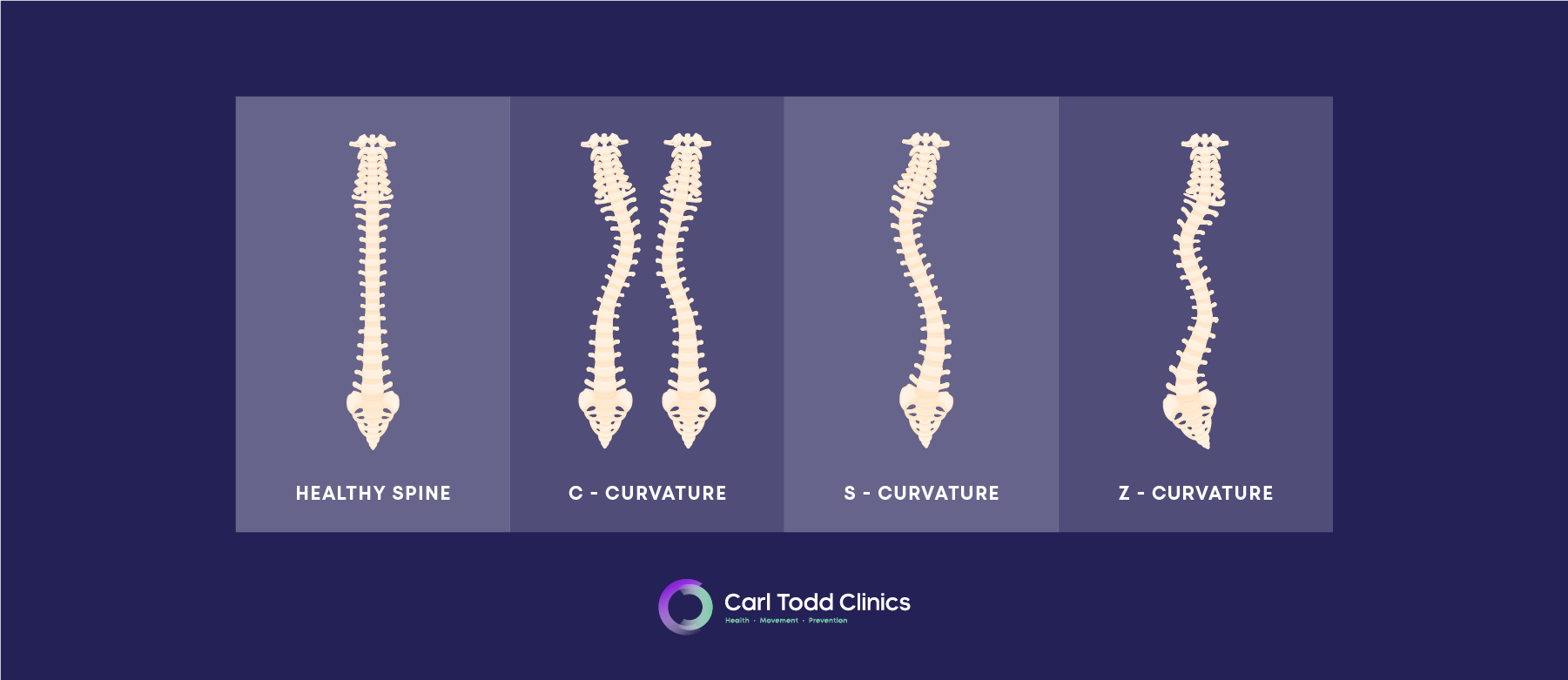
Signs of scoliosis
Early detection and treatment of scoliosis is important. Here are some signs of scoliosis to watch out for:
- A visibly curved spine
- Uneven shoulders
- Difference in the way the arms hang beside the body when standing straight (e.g. one arm appears longer than the other)
- One hip appears higher than the other
- Ribs sticking out to one side or jutting forward
- Head not centred when standing straight
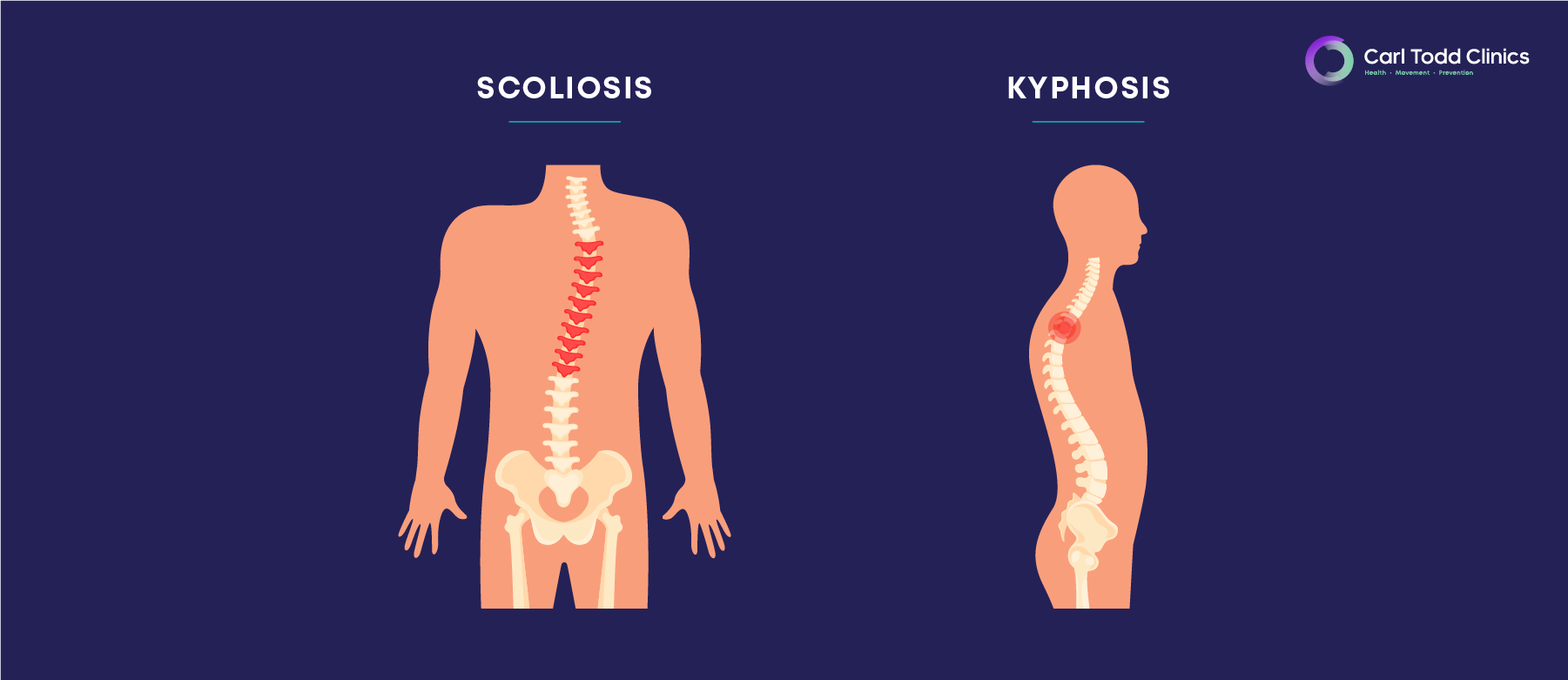
These are the most common signs of scoliosis, but each individual may experience symptoms differently!
Types of scoliosis
Scoliosis can be categorised by either structural vs non-structural scoliosis, or by the cause of the curvature (congenital, idiopathic, or neuromuscular).
Structural scoliosis is the most common type. It involves abnormal rotation (twisting) of the vertebrae along with the sideways curvature. This rotation creates a rib hump on the convex side of the curve, causing the spine to become stiff and permanently deformed.
Non-structural scoliosis (also called functional scoliosis) is a temporary condition caused by muscular imbalance, leg length discrepancy, or pain from other conditions. The spine itself is normal and has no rotation in this case. Treatment is typically through Physiotherapy and focuses on addressing the underlying cause to allow the curvature to correct itself.
Types of scoliosis by cause
Idiopathic scoliosis is the most common type. “Idiopathic” means that the cause is unknown, with the most common time for idiopathic scoliosis to occur being in adolescence or at around the age of 10. Research shows that the process of growing can make it worse and that it runs in families.
Neuromuscular scoliosis is the second most common type of scoliosis and is associated with disorders of the nerve or muscular systems. This includes cerebral palsy, spina bifida and muscular dystrophy. With these conditions, the muscles are often weak and unbalanced which leads to the development of spinal curvature.
Congenital scoliosis is the rarest type, normally detected at birth, early infancy or later on in childhood. Congenital scoliosis is a sideways curvature of the spine and occurs when the vertebrae do not form properly before a baby is born.
Who does scoliosis affect?
Scoliosis can develop at any age, but it most commonly starts in children aged 10 to 15. Adult-onset scoliosis happens when your disks or joints weaken or when you lose bone density.
Infantile scoliosis is found in children younger than 3, whereas juvenile scoliosis refers to children aged 4 to 10. Adolescent scoliosis refers to young people aged 11 to 18 and adult idiopathic scoliosis is diagnosed anytime after the age of 18 when skeletal growth is complete.
How is scoliosis diagnosed?
Typically, the earlier scoliosis is detected, the more successful treatment is. Let’s explore the typical steps involved in diagnosing scoliosis:
1. Physical examination
This is usually the first step. A doctor will examine your posture, spine alignment, and look for any signs of scoliosis mentioned previously, such as:
- Uneven shoulders or hips
- Visibly curved spine
- Uneven waist or ribcage
- Difference in leg length
During the exam, you might be asked to stand straight and then bend forward at the waist with your arms dangling freely. This helps the doctor assess the curvature of your spine and any asymmetry.
2. Imaging tests
If scoliosis is suspected, the doctor will likely recommend imaging tests to confirm the diagnosis and determine the severity of the curve. There are some common imaging tests used when diagnosing scoliosis:
X-rays: This is the most common and reliable way to diagnose scoliosis. X-rays of the spine taken from the front and back (standing or lying down) will show the curvature of the spine and allow measurement of the curve angle using the Cobb method.
Other imaging tests (less common):
MRI (Magnetic Resonance Imaging): While not routinely used, an MRI scan can provide a more detailed view of the spine, including the discs, nerves, and soft tissues, which can be helpful in some cases.
CT scan (Computed Tomography): Similar to an MRI, a CT scan can provide detailed 3D images of the spine, but it involves radiation exposure and is typically used less often than X-rays for scoliosis diagnosis.
Early diagnosis of scoliosis is crucial for effective management. If you have any concerns about yourself or your child, consulting a healthcare professional is always recommended.
How is scoliosis treated?
Treatment will be dependent on your age and the type of scoliosis you have. Some people won’t need any treatment at all, and only a small number will need surgery. For those who are still growing and have a curve at less than 20 degrees (usually adolescents), the “watch and wait” approach is often used to determine whether the spine will continue to curve.
Babies and toddlers may have a plaster cast or brace fitted to their back to stop the curve from getting worse as they are still growing. Older children may wear a back brace to stop the curve from worsening until they stop growing. In some cases, surgery may be needed to control the growth of the spine until an operation to straighten which can be done when they stop growing. Adults may need treatment such as painkillers, spinal injections and very occasionally, surgery.
Physical therapy is also recommended for scoliosis as exercises can help strengthen core muscles that support the spine and improve flexibility.
Treatment with Carl Todd Clinics
While traditional medical approaches often include bracing and surgery, therapies such as osteopathy and physiotherapy play an essential role in comprehensive treatment plans for scoliosis. The therapies we offer can alleviate pain, improve mobility, and enhance overall quality of life.
By addressing the musculoskeletal imbalances associated with scoliosis, osteopathy can help reduce discomfort and prevent further curvature progression. Physiotherapy, on the other hand, emphasises strengthening and stabilising the core and back muscles, which are crucial for maintaining proper spinal alignment.
If you have scoliosis and want to relieve any pain or discomfort it may be causing, get in contact or book an appointment today.


